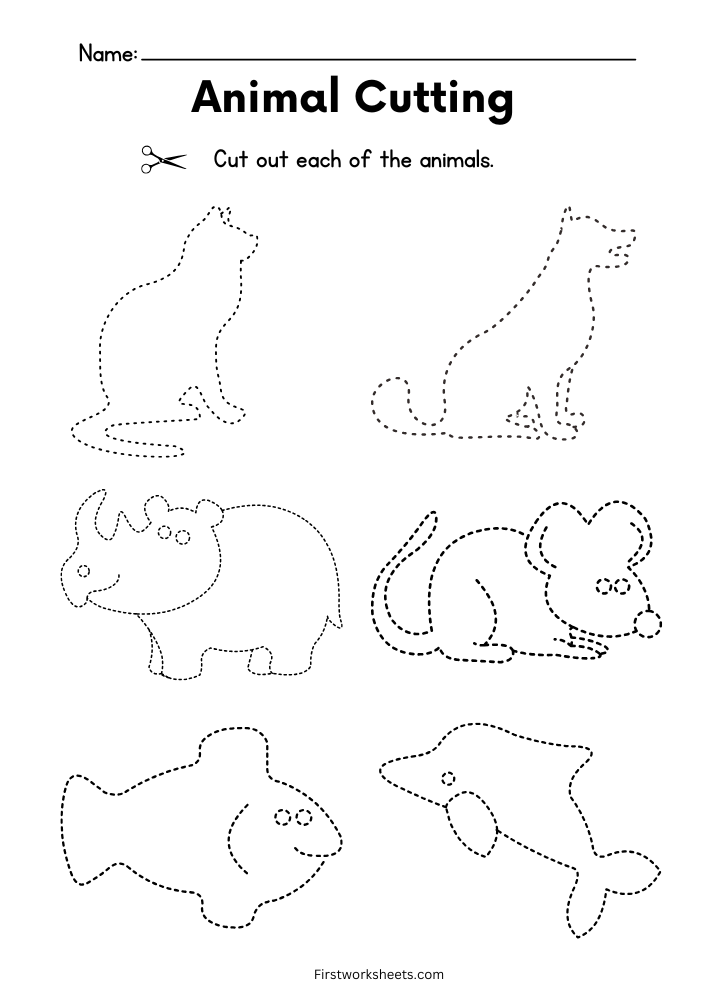This “Shapes Cutting Practice Worksheet” is designed for young children, typically in preschool or early This worksheet, titled “Animal Cutting,” is designed to help young children practice their scissor skills and develop fine motor control. It features six animal shapes for children to cut out, each outlined with dotted lines for easy guidance. Here’s an in-depth explanation of its components and purpose:
Components of the Worksheet
- Animal Shapes:
- The worksheet displays six different animal outlines: a cat, dog, rhino, mouse, fish, and dolphin.
- Each animal is defined by a dotted line, which provides a guide for children to follow with their scissors.
- Instructions:
- The worksheet includes a simple instruction, “Cut out each of the animals.” This is a clear, concise direction that encourages children to cut along the dotted lines of each animal shape.
- Dotted Line Outline:
- Each animal shape has a dotted outline to help children stay on track while cutting, making it easier for beginners to follow the shape without straying from the path.
Purpose and Benefits
- Fine Motor Skill Development:
- Cutting activities are excellent for developing fine motor skills, specifically the small muscles in the hands and fingers. These muscles are essential for tasks like writing, drawing, and manipulating small objects.
- Hand-Eye Coordination:
- The activity helps improve hand-eye coordination as children must carefully guide their scissors along the dotted lines. This coordination is a foundational skill that supports many other learning activities.
- Animal Recognition and Vocabulary:
- As children cut out each animal, they can learn to recognize and name each animal. This helps expand their vocabulary and understanding of different animals, reinforcing early science and language skills.
- Following Instructions:
- By following the instruction to cut along the lines, children practice listening and comprehension skills, learning how to follow directions and stay focused on a specific task.
- Confidence and Independence:
- Successfully cutting out the animal shapes can boost a child’s confidence and foster independence as they complete the task on their own. They get to see their progress and improvement with each shape they cut out.
- Preparation for Writing Skills:
- Cutting along specific shapes helps children develop the hand strength and control needed for writing. The small movements required for cutting closely mirror those needed for forming letters and numbers.
Additional Activities and Uses
- Creative Play: Once cut out, the animal shapes can be used for various creative activities, such as arranging them on another sheet of paper to create a “zoo” scene, or decorating them with crayons, markers, or stickers.
- Storytelling Activity: These animal cutouts can be used to create stories or engage in pretend play, where children use the animals as characters in a story, enhancing their creativity and language skills.
- Sorting and Categorizing: Children can sort the animals by type (land vs. water animals) or size, helping them develop early math and categorization skills.
This “Animal Cutting” worksheet is a valuable tool for supporting early childhood development by enhancing fine motor skills, hand-eye coordination, and creativity, all in a fun and engaging way.
4o






